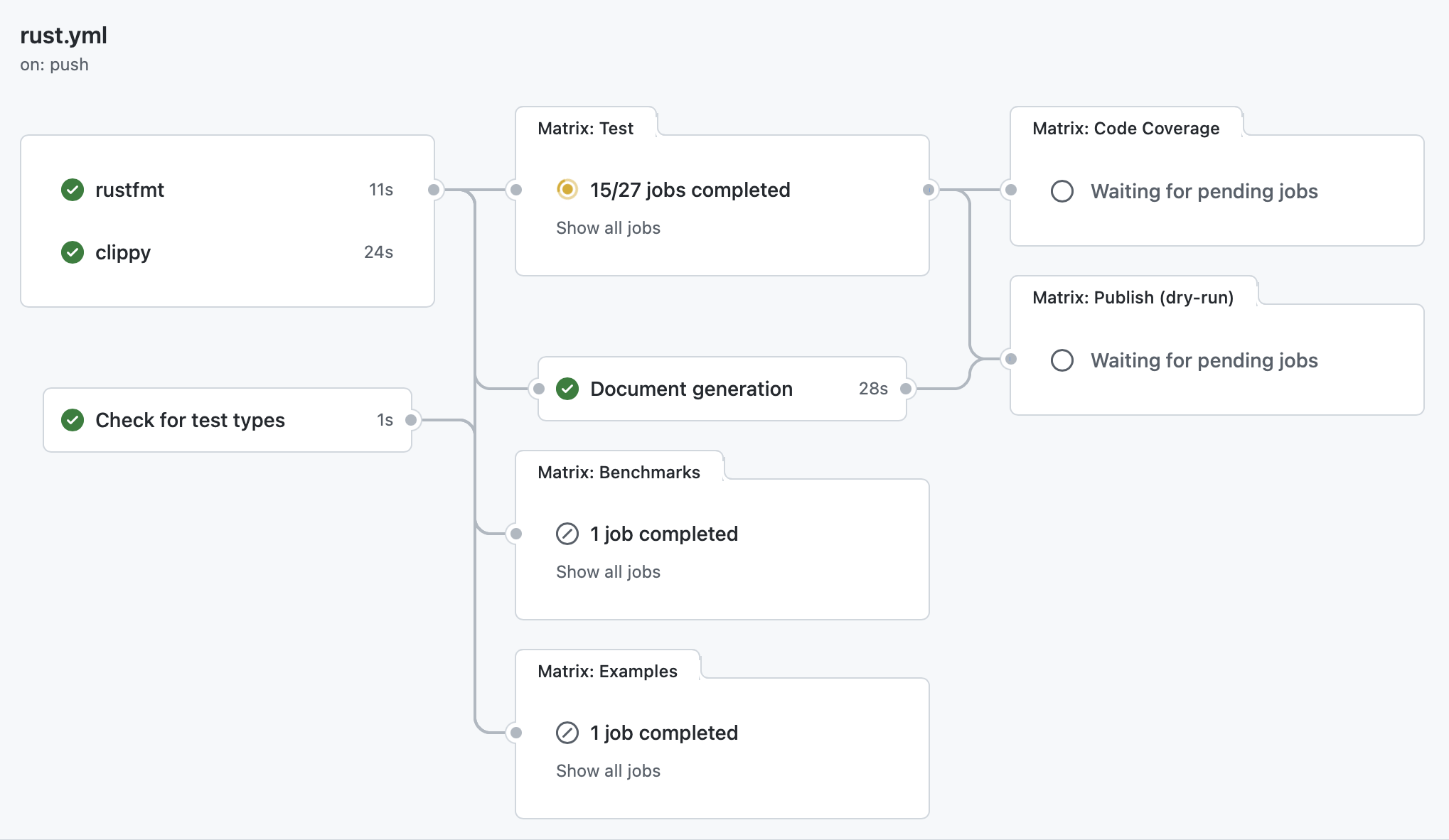Github Actions for Rust
Github Actions have been a great advantage since they were added, and have only grown in value as the number of good quality building blocks increases. At the same time, Rust has a great toolchain and I know I copied some example Rust action and with a little editing I had the following.
name: Rust
on: [push]
jobs:
build:
strategy:
matrix:
os: [ubuntu-latest, macos-latest, windows-latest]
runs-on: ${{ matrix.os }}
steps:
- uses: actions/checkout@v1
- name: Install dependencies
run: rustup component add rustfmt
- name: Format
run: cargo fmt -- --check
- name: Build
run: cargo build --verbose
- name: Run tests
run: cargo test --all-features --verbose
- name: Docs
run: cargo doc --no-deps
Fantastic, so I copied that into a bunch of projects and was pretty happy. But felt like there was some complexity missing, for a start what tests am I running, am I running benchmarks and/or examples? Do I run coverage at the same time or separately from my main tests? I spent some time on a couple of projects evolving my Rust workflow (which I still call pipelines), using jobs, dependencies, and some inputs/outputs between jobs to get too this:

This new workflow is clearly a lot more complex but it has some nice
separation of concerns and allows quite a bit of parallelism. My test matrix
for a start has become a lot more interesting, I now combine not just the
platforms, but toolchain channel and test features. This last addition was
useful in finding a stupid bug that only showed up with --no-default-features.
matrix:
os: ["ubuntu-latest", "windows-latest", "macos-latest"]
rust: ["stable", "beta", "nightly"]
test-features: ["", "--all-features", "--no-default-features"]
Another feature that took a little time to figure out was the turning on/off
the execution of examples and benchmarks. I want them to run if the
corresponding directory exists, but don’t want to have all manner of
conditionals in scripts that fake success if there are no tests. So, I added
the following simple job which generates a flag for each directory and can
then gate subsequent tests based on these flags. Specifically the two
downstream jobs have the following: if:
needs.check_tests.outputs.has_benchmarks or ...has_examples.
check_tests:
name: Check for test types
runs-on: ubuntu-latest
outputs:
has_benchmarks: ${{ steps.check_benchmarks.outputs.has_benchmarks }}
has_examples: ${{ steps.check_examples.outputs.has_examples }}
steps:
- name: Check for benchmarks
id: check_benchmarks
run: test -d benchmarks && echo "has_benchmarks=1" || echo "has_benchmarks=" >> $GITHUB_OUTPUT
shell: bash
- name: Check for examples
id: check_examples
run: test -d examples && echo "has_examples=1" || echo "has_examples=" >> $GITHUB_OUTPUT
shell: bash
I’m sure there will be more iterations, but this was a pretty good step forward and it will be the new baseline to add to my project template and slowly add back into existing projects.
You can find this workflow at rust.yml, along with my security-audit.yml (which includes a schedule to be notified of issues), and release.yml workflows. I also use the cool typos.yml workflow on pull requests.